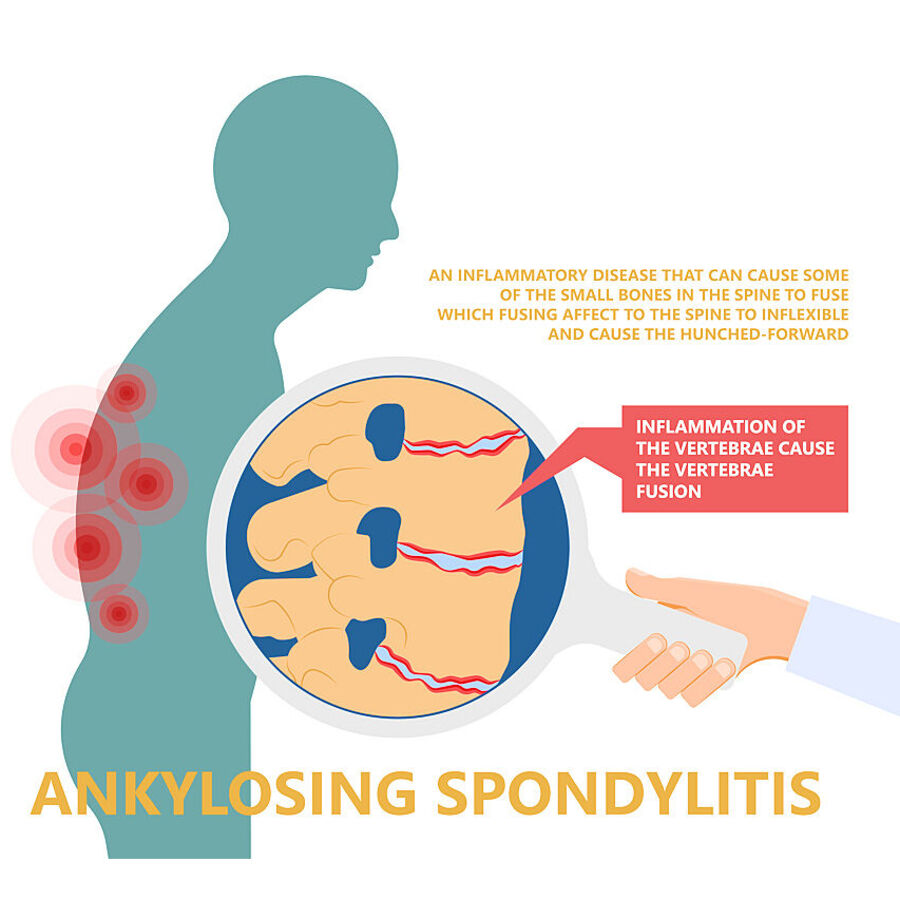Ankylosing Spondylitis Inflammatory Disease in Spine

Ankylosing Spondylitis (AS) is a chronic inflammatory disease that primarily affects the spine, leading to severe, long-term pain and discomfort. This condition causes inflammation of the vertebrae, which can result in the fusion of the spine over time, significantly reducing flexibility and potentially leading to a hunched posture. The inflammation can also affect other joints and organs, including the eyes, heart, and lungs. Symptoms often begin in early adulthood and include persistent back pain and stiffness, particularly in the morning or after periods of inactivity. While the exact cause of AS is unknown, it is believed to involve a combination of genetic and environmental factors. Early diagnosis and treatment are crucial to manage symptoms and improve quality of life, often involving medications, physical therapy, and lifestyle modifications.
YOGA can be a beneficial practice for managing Ankylosing Spondylitis (AS) by improving flexibility, reducing pain, and enhancing overall well-being. Here are some Yoga Poses that can help:
Child’s Pose (Balasana): This pose gently stretches the lower back and hips, providing relief from stiffness and pain.
Downward Facing Dog (Adho Mukha Svanasana): This pose helps stretch the spine, strengthen the core and arms, and improve overall flexibility.
Cat-Cow Pose (Marjaryasana-Bitilasana): This sequence increases spinal flexibility and reduces stiffness by alternating between arching and rounding the back.
Cobra Pose (Bhujangasana): This pose strengthens the spine and opens up the chest, which can help improve posture and reduce back pain.
Bridge Pose (Setu Bandhasana): This pose stretches the spine, neck, and chest, and strengthens the back muscles.
Mountain Pose (Tadasana): This simple standing pose improves posture and balance, which can be beneficial for spinal alignment.
Get off the couch, and watch TV from the floor, while stretching your body in poses that it needs to re-balance itself.
Do not push hard when working with pain, or old injuries.
Attend one of my Hips, Back, Neck YOGA™ Classes, and see if it is a good fit for you, and your bodies needs.
If you are unsure if exercise is safe for you, please seek medical attention from a doctor, to find that you are fit enough to exercise.
Incorporating these poses into your YOGA routine can help manage the symptoms of AS. Remember to practice gently and listen to your body, avoiding any movements that cause pain. Consulting with a healthcare provider or a yoga instructor experienced in working with AS can also be beneficial.